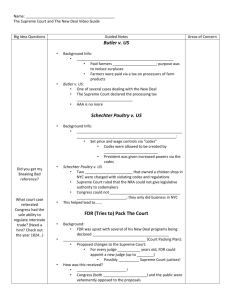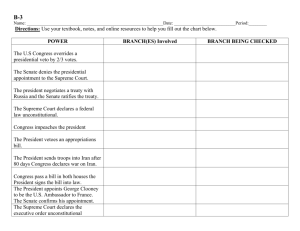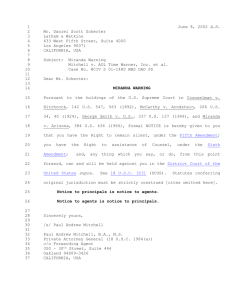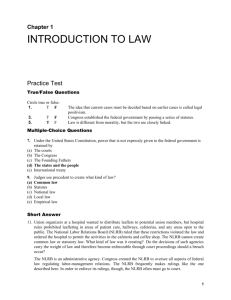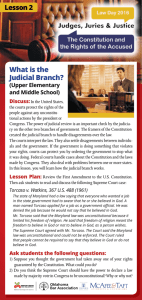Pivotal New Deal Supreme Court Challenges
advertisement
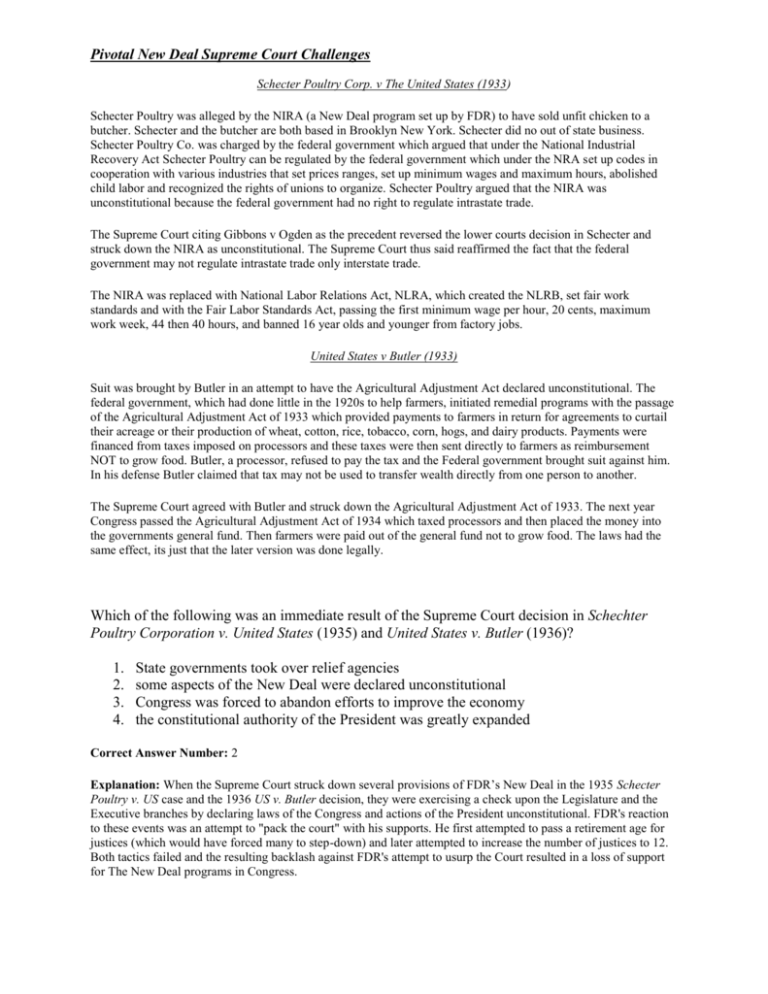
Pivotal New Deal Supreme Court Challenges Schecter Poultry Corp. v The United States (1933) Schecter Poultry was alleged by the NIRA (a New Deal program set up by FDR) to have sold unfit chicken to a butcher. Schecter and the butcher are both based in Brooklyn New York. Schecter did no out of state business. Schecter Poultry Co. was charged by the federal government which argued that under the National Industrial Recovery Act Schecter Poultry can be regulated by the federal government which under the NRA set up codes in cooperation with various industries that set prices ranges, set up minimum wages and maximum hours, abolished child labor and recognized the rights of unions to organize. Schecter Poultry argued that the NIRA was unconstitutional because the federal government had no right to regulate intrastate trade. The Supreme Court citing Gibbons v Ogden as the precedent reversed the lower courts decision in Schecter and struck down the NIRA as unconstitutional. The Supreme Court thus said reaffirmed the fact that the federal government may not regulate intrastate trade only interstate trade. The NIRA was replaced with National Labor Relations Act, NLRA, which created the NLRB, set fair work standards and with the Fair Labor Standards Act, passing the first minimum wage per hour, 20 cents, maximum work week, 44 then 40 hours, and banned 16 year olds and younger from factory jobs. United States v Butler (1933) Suit was brought by Butler in an attempt to have the Agricultural Adjustment Act declared unconstitutional. The federal government, which had done little in the 1920s to help farmers, initiated remedial programs with the passage of the Agricultural Adjustment Act of 1933 which provided payments to farmers in return for agreements to curtail their acreage or their production of wheat, cotton, rice, tobacco, corn, hogs, and dairy products. Payments were financed from taxes imposed on processors and these taxes were then sent directly to farmers as reimbursement NOT to grow food. Butler, a processor, refused to pay the tax and the Federal government brought suit against him. In his defense Butler claimed that tax may not be used to transfer wealth directly from one person to another. The Supreme Court agreed with Butler and struck down the Agricultural Adjustment Act of 1933. The next year Congress passed the Agricultural Adjustment Act of 1934 which taxed processors and then placed the money into the governments general fund. Then farmers were paid out of the general fund not to grow food. The laws had the same effect, its just that the later version was done legally. Which of the following was an immediate result of the Supreme Court decision in Schechter Poultry Corporation v. United States (1935) and United States v. Butler (1936)? 1. 2. 3. 4. State governments took over relief agencies some aspects of the New Deal were declared unconstitutional Congress was forced to abandon efforts to improve the economy the constitutional authority of the President was greatly expanded Correct Answer Number: 2 Explanation: When the Supreme Court struck down several provisions of FDR’s New Deal in the 1935 Schecter Poultry v. US case and the 1936 US v. Butler decision, they were exercising a check upon the Legislature and the Executive branches by declaring laws of the Congress and actions of the President unconstitutional. FDR's reaction to these events was an attempt to "pack the court" with his supports. He first attempted to pass a retirement age for justices (which would have forced many to step-down) and later attempted to increase the number of justices to 12. Both tactics failed and the resulting backlash against FDR's attempt to usurp the Court resulted in a loss of support for The New Deal programs in Congress. National Labor Relations Board v. Jones & Laughlin Steel Corp. Citation: 301 U.S. 57 (1937) Facts Concepts: Commerce/Labor Relations/Unionism In a proceeding under the National Labor Relations Act of 1935, the National Labor Relations Board (NLRB) found that the Jones & Laughlin Steel Corporation had violated the act by firing ten union members because of their union membership. The NLRB demanded the steel company stop discrimination against union workers; the corporation failed to comply. The Circuit Court of Appeals refused to enforce the order of the NLRB holding that the order was outside the range of federal power. Issue Whether or not the United States Congress’ involvement in labor relations went beyond its means to regulate interstate commerce, as found in Article I, Section 8, Clause 3 of the Constitution of the United States. Opinion The Supreme Court of the United States ruled 5-4 in favor of the NLRB, stating that Congress has ability to regulate intrastate matters when they directly burden, threaten, or obstruct interstate commerce. A labor strike in the steel factory would disrupt the “stream of commerce,” and would have a direct effect on the flow of interstate commerce. Therefore, Congress has the power to regulate all trade which may upset the balance between inter and intrastate commerce. Why do you think that the Court upheld the decision of the NLRB when it had previously overturned New Deal Challenges?
